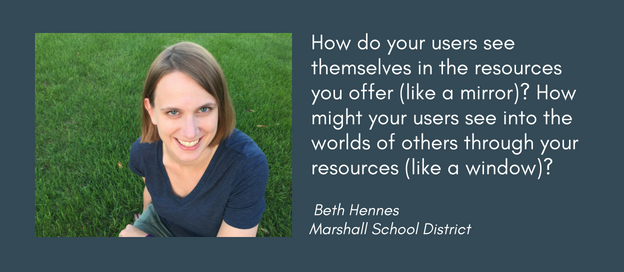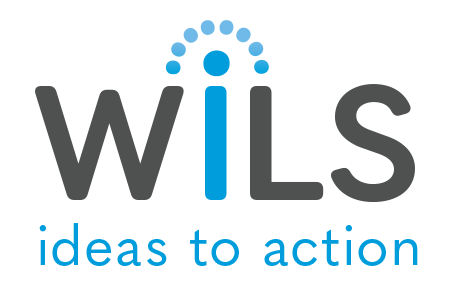
One of our greatest joys at WiLS is hearing our members tell the stories of the big and important work they are doing – interesting new projects or initiatives, or even interesting and new approaches to old projects. And, in addition to hearing about it, it makes us even happier when we can share those stories with other members. Each month, WiLS is proud to feature an interview with one of our library members. This month, we interview Beth Hennes, Library Media Specialist at the Marshall School District.
Why did you, personally, choose to work in libraries?
School librarianship is actually my third career. It was an idea that came up quite a few times over the years, but I either didn’t know how to get started, already was halfway through a degree, already had a job, etc. and I convinced myself it was too late to make a change. (HA! Of course, it’s not too late; not everyone gets it right the first time.) However, I’ve always really cared about intellectual freedom, privacy, inquiry, and reading promotion, so it was a natural fit.
What is unique about the culture of your library? How do you influence it?
My libraries really have a lot of collaborative workspace. Usually, they are filled with the happy noise of learning, though occasionally, the less productive noise of socializing rises up. At the high school, the library is located at a crossroads in the building, so my position as a hallway gives me contact with kids I might not normally see for just library purposes. I try to be an adult that kids connect with because they trust me and can tell I care.
What do you think is important to know about the community you work with? What helps you understand their needs?
I think a lot about “windows and mirrors” when I think about how to serve a community. How do your users see themselves in the resources you offer (like a mirror)? How might your users see into the worlds of others through your resources (like a window)? If you think, “We don’t have those kinds of kids here,” then that is all the more reason to make sure that you have “those kinds” of materials—so that your kids can look through the window at what they are missing.
I also try to think about the instructional/content areas we teach in our school and consider if there are library resources available. Do we have materials for physical education, for music, for English Language Learners? Does everyone really have access to what they really need, digital or in print?
However, the best understanding I’ve gained though has come from just asking my users what they need. I’ve done interviews and surveys and meetings. It’s not always positive or what I expected, but sometimes that’s what you need to hear most.
What big ideas are being worked on at your library? What problems are being solved?
We’re grappling with the beginnings of a “Passion Project” course that high school students can take for semester credit beginning next year. Our goals are to offer opportunities for learning outside of our traditional coursework and facilitate independent, rigorous learning with our students. While the library program may not directly be involved in hosting or guiding these students, I have taken the lead on pushing for and launching the project because this kind of inquiry learning is our specialty. Enthusiasm from students and staff is running high—I’m thrilled by the interest, yet terrified that it will flop!
Our ongoing struggle is a reading culture one. It feels like I am encountering more and more reading-haters. My circulation stats are decreasing; kids seem to be spending their downtime on social media and consuming streaming videos. Is our English Language Arts curriculum causing this readicide? What more can we do to foster a community of readers? We’ve already made some good efforts, but the work is far from over.
These interviews are part of a series of interviews with both WiLS library and vendor partners. Your feedback is appreciated. If you have any to offer on this article, or suggestions for upcoming interviews, contact Andrea Coffin at acoffin@wils.org.
